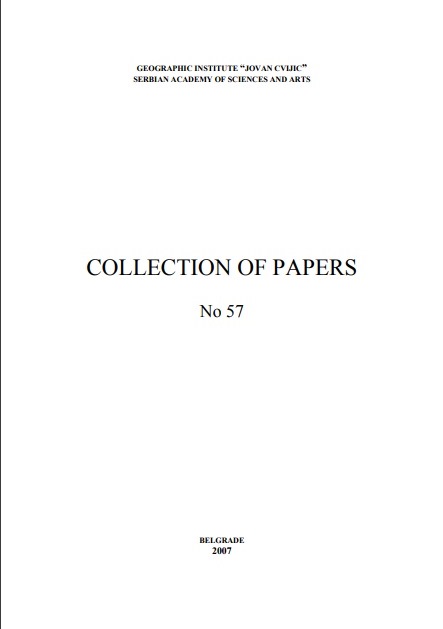FUZZY ПОГЛЕД НА ЖИВОТНО ОКРУЖЕЊЕ
A FUZZY VIEW OF THE ENVIRONMENT
Author(s): Branislav Bajat, Dušan Joksić, Zoran D. NedeljkovićSubject(s): Environmental Geography
Published by: Географски институт »Јован Цвијић« САНУ
Keywords: GIS; fuzzy logic; visualization
Summary/Abstract: A period of fifty years has been reached since the introduction of the first applications based upon geographical information systems (GIS). GIS has not only influenced the development of methods, collection techniques, processing, manipulation and visualization of spatial data. It influenced also the expansion of scientific research in geosciences, as well as the technical disciplines that are engaged in spatial analysis. Nowadays, GIS is becoming the tool for verification and practical implementation of models and algorithms that have been developed within the frame of basic scientific disciplines. The meaning of the GIS acronym is becoming more and more related to term of Geographical or Geo Information Sciences. Scientific concepts that are increasingly applied in GIS are more emphasized in that way. GIS computational techniques, required also the development of geographical data models that should effectively support GIS operations. These models represent formal equivalents of conceptual models used by people in observing geographic phenomena. Spatial phenomena used to be mapped as clearly defined points with known coordinates, or as lines which connect the very same points, or as polygons with exactly defined borders. They were mapped previously in analog form and nowadays in digital format. This approach of perceiving a space, data analyses and visualization of spatial quires is limited on the application of basic rules of Boolean algebra and binary logic, with final results presented as classical thematic maps.The need for a mathematical model that would describe uncertainty of spatial data, resulted in the introduction of the theory of fuzzy sets in spatial analysis. Moreover, this model will provide a solution for visualization and grouping up of spatial phenomena in classes which do not have clearly defined borders.
Journal: Зборник радова Географског института "Јован Цвијић" САНУ
- Issue Year: 57/2007
- Issue No: 1
- Page Range: 399-406
- Page Count: 8
- Language: English, Serbian

